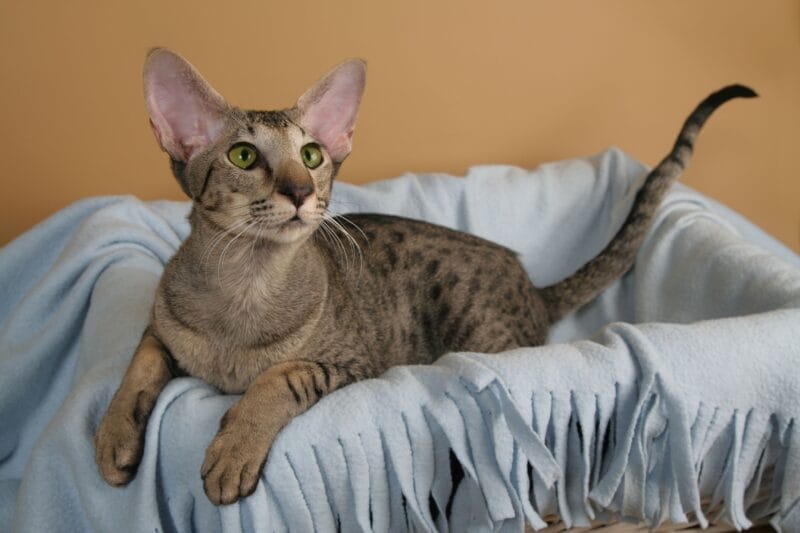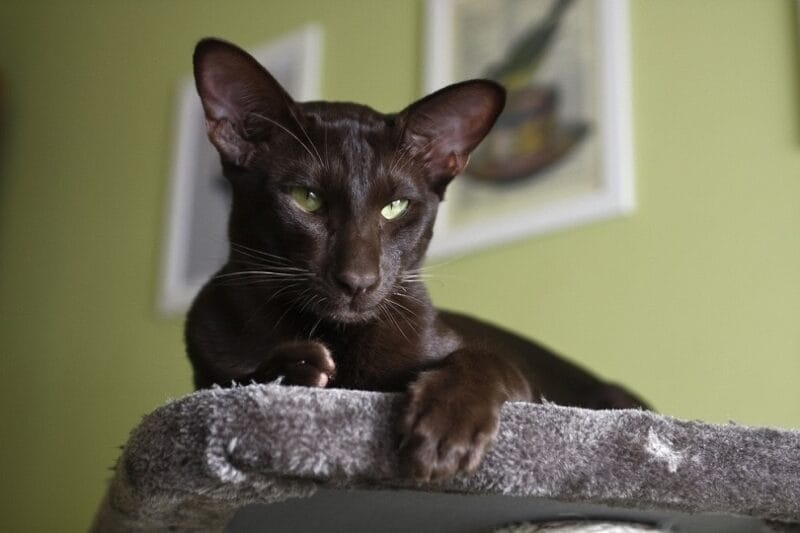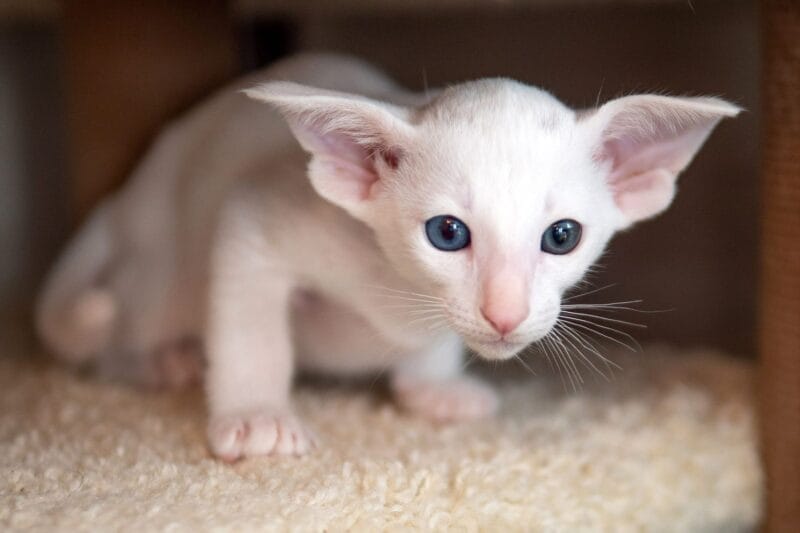The Oriental Shorthair is an elegant, lively breed renowned for its striking appearance. Read on to learn all about this popular feline.
Introduction about Oriental Shorthair Cat Breeds
The Oriental Shorthair originated as a variant of the Siamese cat, bred to exhibit a wider range of coat colors while maintaining the svelte body type and lively personality. First recognized as a breed in the 1950s, Orientals have grown steadily in popularity over the decades.

Orientals are highly active, vocal cats that form strong bonds with their families. They thrive when given ample playtime and interaction to satisfy their curious, intelligent nature. Overall, Orientals make endearing and entertaining companion cats.
Affectionate with Family: ⭐⭐⭐⭐⭐
Amount of Shedding: ⭐⭐
General Health: ⭐⭐⭐
Potential for Playfulness: ⭐⭐⭐⭐⭐
Tendency to Vocalize: ⭐⭐⭐⭐
Kid-Friendly: ⭐⭐⭐⭐
Friendly Toward Strangers: ⭐⭐⭐
Easy to Groom: ⭐⭐⭐⭐
Intelligence: ⭐⭐⭐⭐⭐
Pet Friendly: ⭐⭐⭐
- Appearance: Slender but muscular body, pointed ears, almond eyes. Wide variety of coat colors and patterns.
- Characteristics: Energetic, vocal, loyal, intelligent, playful.
- Popularity: Gaining popularity, especially in North America, Europe, and Asia.
- Temperament: Affectionate, curious, active, social.
- Lifespan: 11-15 years.
- Coat: Short, fine coat that lies close to the body. Comes in all colors and patterns.
The Oriental Shorthair is an original breed developed from the Siamese.
Caring for an Oriental Shorthair Cat
- Food: High-protein cat food. Wet or raw diets suit their active metabolism.
- Environment: Cat trees, perches, interactive toys. Plenty of playtime with humans. Access to windows.
- Grooming: Weekly brushing to control shedding. Nail trimming every 2-3 weeks. Check ears. Brush teeth.
- Enrichment: Puzzle feeders, treat balls, catnip. Clicker training. Change up toys often to prevent boredom.

Adopting an Oriental Shorthair Cat
- Popular worldwide, especially North America, Europe, and Asia.
- Cost ranges from $600 – $1200 USD depending on breeder.
- Rescues to consider: Oriental Shorthair Rescue Society, Siamese Rescue Center.
Before adoption, check:
- General health: Ensure the cat is active, healthy and at a good weight.
- Vaccines: Should be up to date on core vaccines like rabies, FVRCP, FeLV.
- Medical history: Review vet records for pre-existing conditions.
Preparing for an Oriental Shorthair Cat
Cat-proof home by securing cables, toxic items, fragile objects. Provide scratching posts.
Have food bowls, litter box, bed, scratcher, toys ready. Cat-proof houseplants.
- Useful supplies: interactive toys, nail trimmer, pet insurance, dental treats.
- Common health issues: dental disease, heart disease, cancer. Annual vet visits.
- Core vaccines: Panleukopenia, rhinotracheitis, calicivirus, rabies, feline leukemia.
Naming an Oriental Shorthair Cat
Choose exciteable, unique names that complement their vibrant personalities. Popular choices include Jasmine, Ming, Liu, Mei, or location inspired names.

I hope this guide covers everything you need to know about the lively Oriental Shorthair breed! Let me know if you need any clarification or have additional questions.
Do they like going outside?
With supervision and harness for safety. Their curious nature enjoys outdoor exploration.
Are they smart?
Highly intelligent and easily trained. Quick learners.
Types of Orientals?
Only shorthaired. All coat colors and patterns accepted.
Stopping biting?
Redirect to toys, firmly say “no,” ignore them briefly.
Stopping scratching?
Provide scratching posts. Use deterrent sprays on furniture. Trim nails.
Socialization for friendliness?
Handle frequently from kittenhood, do positive vet visits, meet new people.
Training?
Use rewards like treats or play. Keep upbeat tones during short sessions.
Vet visits?
Annual exams plus when issues arise. More frequent visits for kittens or seniors.
Good family pets?
Yes, affectionate and energetic enough for active families.
Good with kids?
Yes, if properly introduced. Supervise young children.
Good with other pets?
Can coexist with proper introductions. Have some prey drive.
Cause allergies?
Low shedding helps minimize reactions, but they vary individually.
Aggressive?
No, quite friendly if properly socialized from a young age.
Hair loss problems?
Seasonal shedding. Can overgroom when stressed or bored.
Are you a cat lover who wants to learn more about your furry friends? Do you want to find the best cat food, cat care tips, and resources for your cats? If so, you’ve come to the right place! Welcome to Cat Food Site, the ultimate website for cat enthusiast.
Here you will find everything you need to know about cats Breed, from their health and behavior to their breeds, cat diet and names. You will also discover the latest cat news, cat nutrition, trends, and memes from around the web.

